ASUS, EVGA, Zotac GeForce GTX 460 Cards Overclocked and Reviewed
by Ryan Smith on July 12, 2010 8:00 AM EST- Posted in
- NVIDIA
- GeForce GTX 460
- GPUs
Overclocked Power, Temperature, & Noise
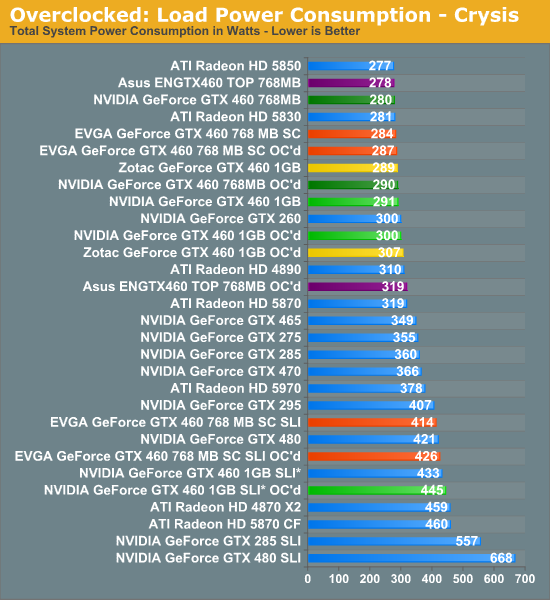
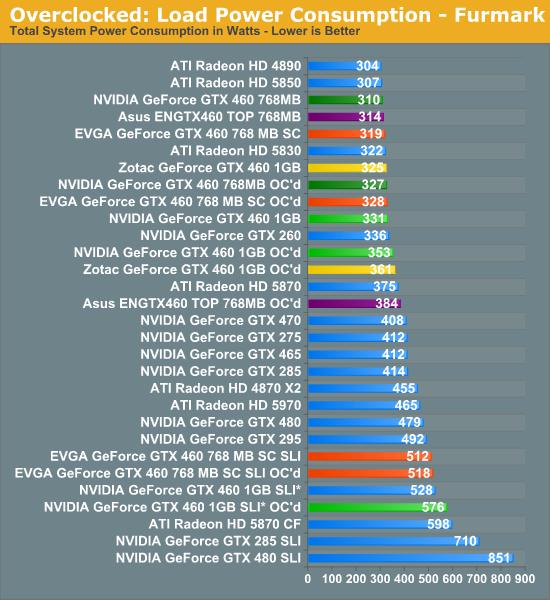
For the Zotac and EVGA cards without voltage tweaking capabilities, the power consumption penalty for overclocking is very minor due to the fact that power consumption increases with voltage much faster than it does with frequency. For the stock-clocked Zotac this is an 18W-36W penalty, while the factory overclocked EVGA cards are even lower (thanks to binning) at just 9W. Meanwhile as expected the Asus card with its voltage tweaking capabilities ends up witnessing a larger jump in power consumption in return for its greater overclock capabilities: 70W under Furmark. This is nearly half of the card’s TDP, so this is a very notable difference.
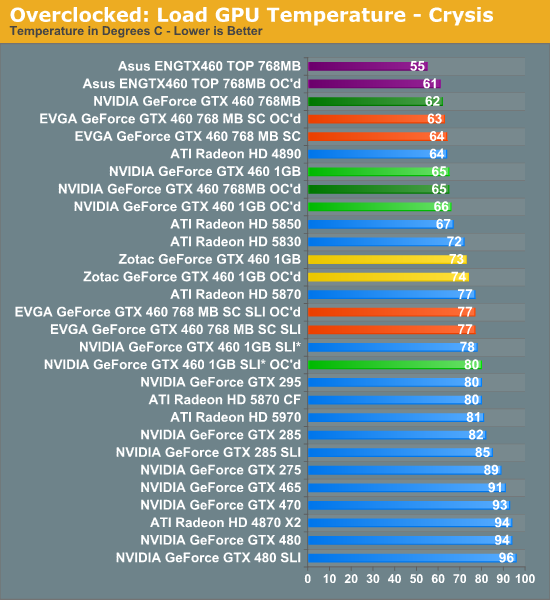
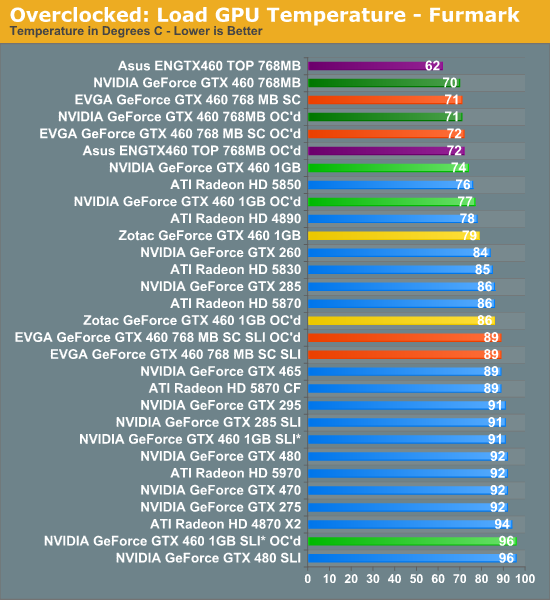
With only a minor increase in power consumption, our non-voltmodded GTX 460s only experience a minor rise in temperature. The EVGA card only rises in temperature by a single degree, and even the Asus only rises to 72C under Furmark thanks to its more aggressive fan, leaving temperatures well in the safe range for these cards. Zotac card fares the worst here, most likely due to its partially blocked vent – here it reaches a more toasty 86C.
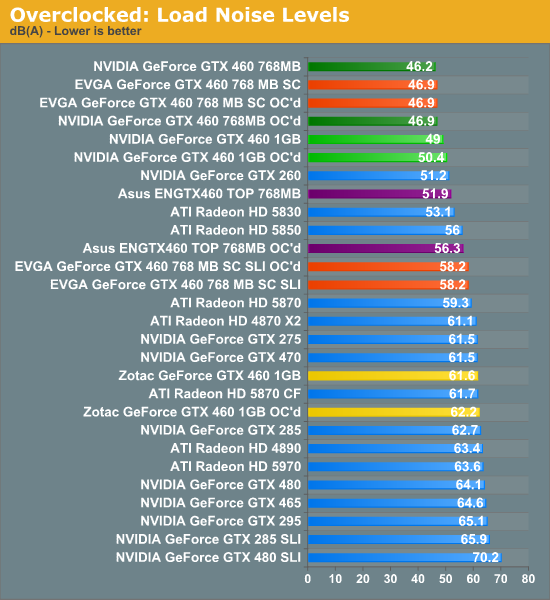
Last but not least we have the noise factor. Thanks to the very low increase in power consumption increase the EVGA and Zotac cards experience when overclocking, the coolers on these cards have to do very little to handle the extra heat. Here the amount of noise generated increased by less than 1.5dB for the already loud Zotac, and in the case of our EVGA cards didn’t increase at all. The Asus card is of course the exception to the rule here, once again due to a combination of the more aggressive cooler and voltage modification. Here the amount of noise generated shoots up by 4.4dB when overclocked, which is a fair trade for the overclock but is definitely going to be more noticeable than the rest of the cards in our collection.










31 Comments
View All Comments
ClownPuncher - Monday, July 12, 2010 - link
$460 vs $580 you mean! Though, for a 2 card setup, I would say getting a pair of gtx460 is a no brainer at this point.tviceman - Monday, July 12, 2010 - link
Both AMD and Nvidia have released several updated drivers with performance improvements since the gtx400 series came out. It would be nice if you guys could do a benchmark review of Nvidia's 400 series cards vs. AMD's 5000 series all using the latest drivers so all your readers (including me) can get a clear picture of how each card stands with the most updated drivers.tviceman - Monday, July 12, 2010 - link
It would be a great, informative article - a very informative article focusing on performance and high end parts with as updated as possible drivers and a quick overview of current prices.Etern205 - Monday, July 12, 2010 - link
One possible reason why Zotac's attempt at HD5850's cooling at failed is the HD5850 isn't reference cooling doesn't really blow hot air out of the case. If you take a look at a reference card, there will be 2 slit vents located at the top of the card, which also lets hot air out and back into the case.Here is a picture of it
http://yfrog.com/j8hd5850dj
Etern205 - Monday, July 12, 2010 - link
Sorry, link is not working...Correct link
http://img692.imageshack.us/img692/516/hd5850d.jpg
setzer - Monday, July 12, 2010 - link
One question, why still use the 10.3a drivers? Even if you say performance hasn't changed (part 1), it's only fit to compare latest drivers to latest drivers.d4a2n0k - Monday, July 12, 2010 - link
Because they just use the numbers from previous benchmarks and those were the drivers used at that time.Ryan Smith - Monday, July 12, 2010 - link
Basically this. I do spot checking on new drivers to find performance differences, but I don't run every last test on every last card on every driver (a full NV+AMD rebench is over a weeks' labor). For that reason 10.3a is listed since that's the driver version those numbers came from. Listing 10.6 would be dishonest even if the numbers are the same as we haven't tested every single configuration with 10.6.tviceman - Monday, July 12, 2010 - link
Which is why it would be great to get a re-evaluation of both AMD's 5800 series and Nvidia's 40 series all with the latest drivers. Both camps have released come out with several driver revisions stating mild to moderate performance gains in many of today's games. It would give an excellent indication as to how far both camps have come along since they released their cards, and most important it would give a more clear indication as to how performance is right now, as opposed to recycling months old benchmarks.Ryan Smith - Tuesday, July 13, 2010 - link
The numbers from the 10.3a drivers are still accurate for the 10.6 drivers. Or in other words, the performance "right now" is the same.